Anarkia Boladona
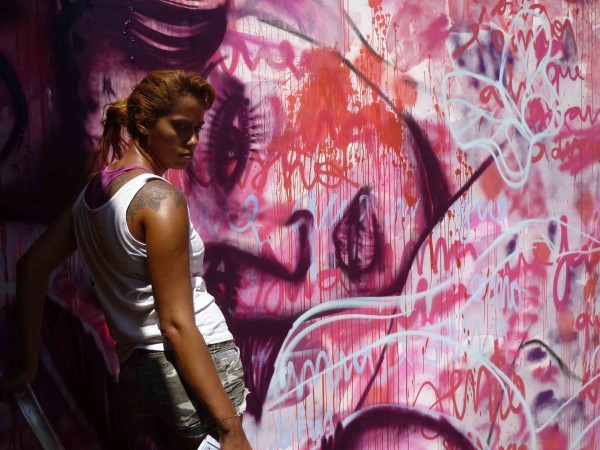
“My name is Panmela Castro, better known as Anarkia. I do graffiti. Today I’m doing a mural for an exhibition that’s going to happen at the State Council for Women’s Rights. The name of the exhibition is ‘Colour Shocking Pink’.
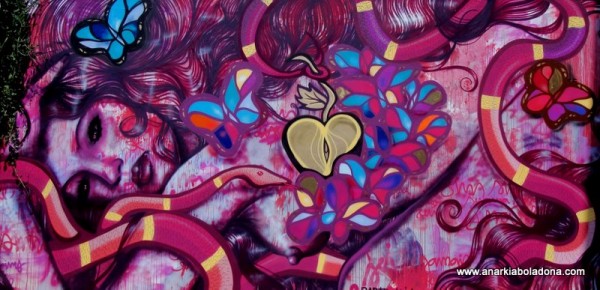
This mural is the story of Eve. There is Eve, the snake and the apple. So this Eve, she’s in this place with nothing to do, it was really super boring, a proper drag and there was even this guy there telling her what she could and couldn’t do, giving her orders. One day she gets really fed up, and says well I’m going to do what I want, I’m going to be happy now, I’m not going to obey any man.
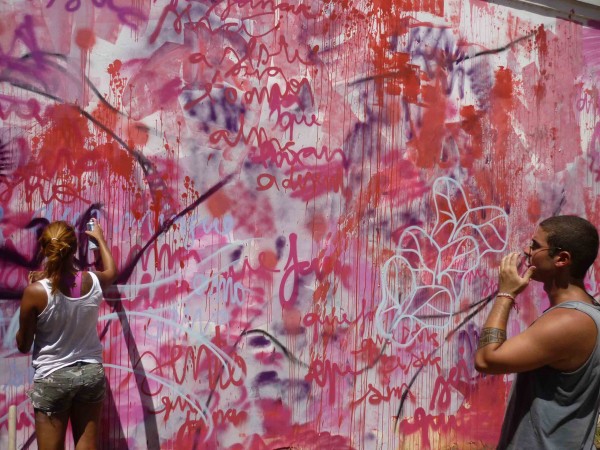
Then she began to make loads of friends: her first friend was the snake, and she began to try different fruits, but then those who were scared of the boss, this big guy, began criticizing and demoralizing Eve, saying that she was loose and so on.Now the boss guy in the story isn’t Adam it was God. Eve controlled Adam and didn’t pay him much attention; the problem was the other guy who thought he was the sinistrão (The Boss).
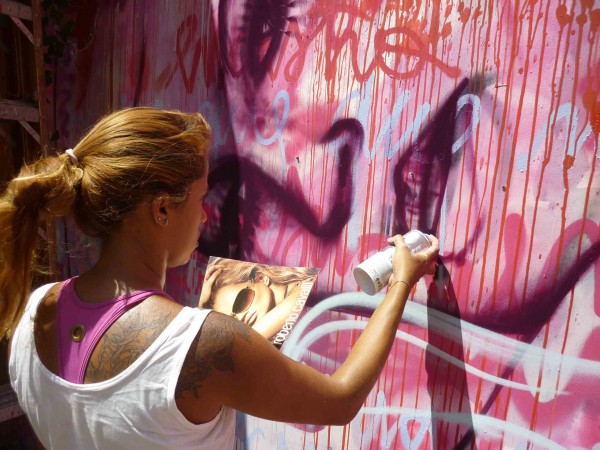
The apple symbolized sex – even though God said that they couldn’t try it – Eve decided to do it anyway. In reality she had sex with Adam, so the Bible says that she had the power to dominate him. The problem is God who stood there saying that she couldn’t do that, but can you imagine Adam and Eve for all eternity in paradise without doing anything? Eve was malandra (cunning).
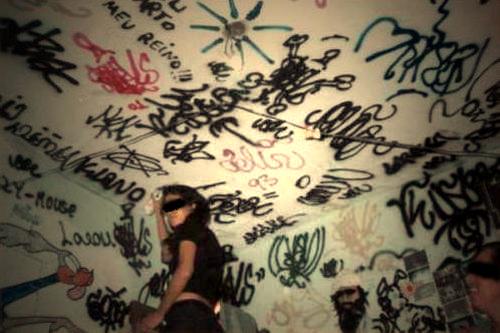
I started graffiti on the street in 2005 but before that I was a pixadora. In reality I flirted with graffiti for 5 years before I started painting. Pixacao is more or less what people outside Brazil call tags, which means writing your name with spray paint on a wall, although it grew differently here, as a self contained culture. Here there is the thing about writing names as high as possible on buildings and to make sequences, so pixacao took on its own characteristics. I started through a friend who studied at the time, who started to pixar to get in with the boys at school, and it worked for her.
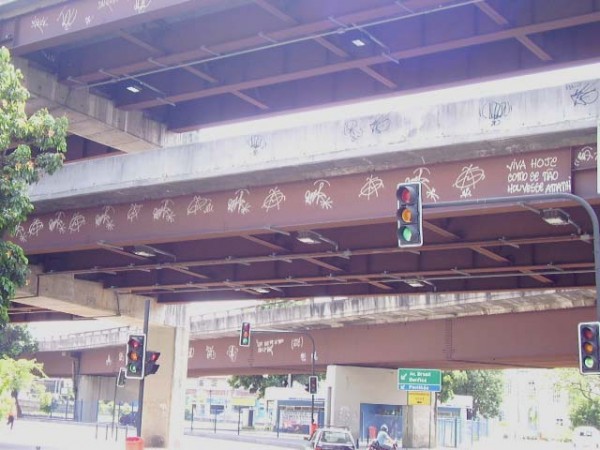
A pixador is a normal person – they could be firemen, policemen or teachers. They are normal people but instead of going out to a dance or to play football they go out to pixar, it’s their leisure…just that it’s illegal. The adrenaline that someone might get from motocross might be the same that someone gets from doing something illegal that happens to be writing their name on a wall.
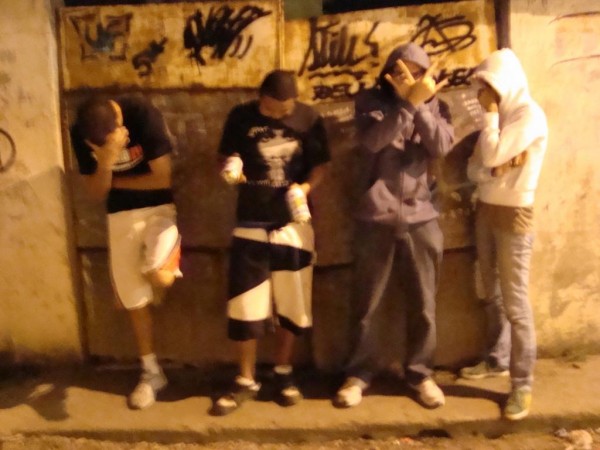
I stopped pixacao in 2002. My career wasn’t very long, but I always lived among it, because it generates a circle of friends that you can’t get away from afterwards. I think this is one of the motives for pixacao: to be someone somewhere, to be a member of a group. I stopped because I got married and became a housewife when I was 21, and I only started doing graffiti after I got separated. I wasn’t going to go back to pixacao, I was working and studying, I had set up a house, and there was no way I was going to start running from the police again or getting shot at. At the time of being a pixadora it was difficult because there weren’t any girls and they always thought that we wouldn’t be able to keep up, so I had to work to earn my space. With graffiti, even though the boys were more open, it was still the same thing, I heard to earn my space. Nowadays any girl can join in because we already conquered the terrain for them.
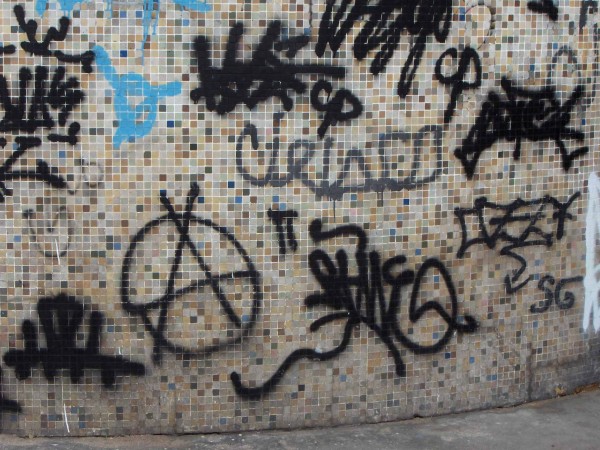
I’ve always been ANARKIA since I began with my first pixacao. The first thing I ever wrote was the punk A in a circle, the A for anarchy, and then I began to stylize it and it became my logo. I know how to do a lot of throw ups, when I started writing graffiti I started doing pieces and throw-ups in the street, then I began to write letters – Anarkia, a big filled in A, then I wrote Anark, and now I write Kia.
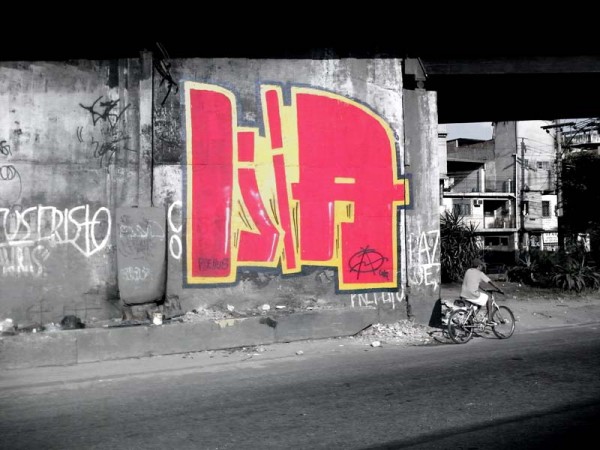
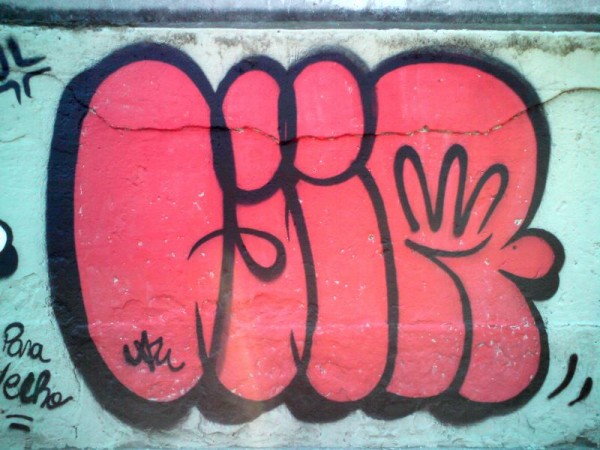
I still paint in the street, I have my spots, and now and then I go there and renew, in the Leopoldina area there are loads of walls that are mine. I already argued with almost everyone in graffiti, but we’re all friends now. I once fought with a girl from pixacao and there was a boy in graffiti who I wanted to fight in the past, but when I tried people never let me do it. Now we’re friends. I’ve learnt to respect other people’s differences over the years.
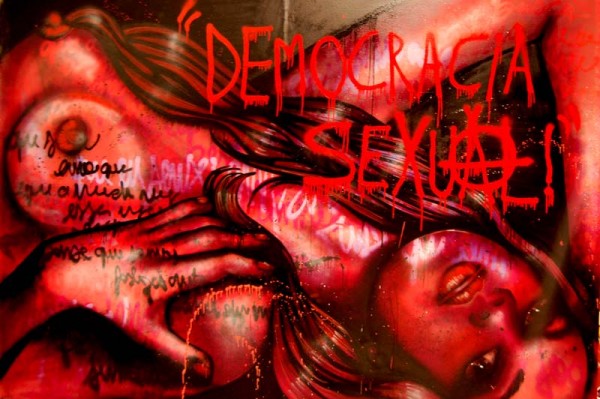
Through graffiti I can say what I think and express myself to everyone irrespective of race, gender or social class, it’s there for everyone to see. I’m a painting graduate and I’ve been studying drawing since I was nine. I began to incorporate the theme of women into paintings when I began to turn into a feminist.
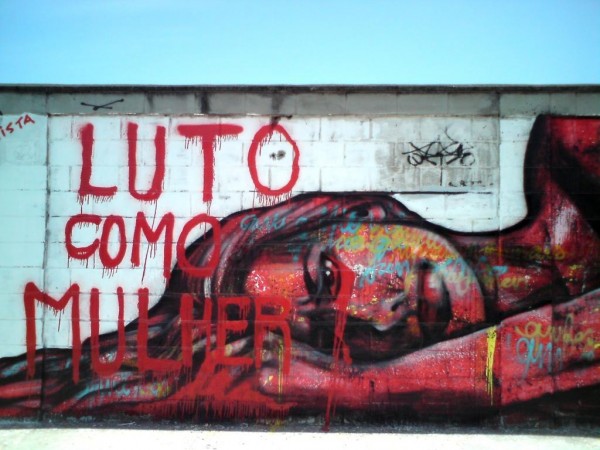
Being a feminist means being a politicized woman, conscious of her rights and who fights for recognition of her rights and cultural equality because even though we’re equal in our constitution, we haven’t managed to conquest this equality culturally speaking and in our lives. But we’re on our way there, and the process is going well. However there’s still a lot about the woman being a housewife; we can work, but we still have total responsibility for children, there isn’t much division of responsibility with the father, and then there’s the triple day of work, study, home/kids. We still earn less than men and I think this cultural inequality appears a lot in the thematic of sexuality and that’s why I use this in my work, because there are unwritten rules that say women can’t behave in a certain way, but men can.
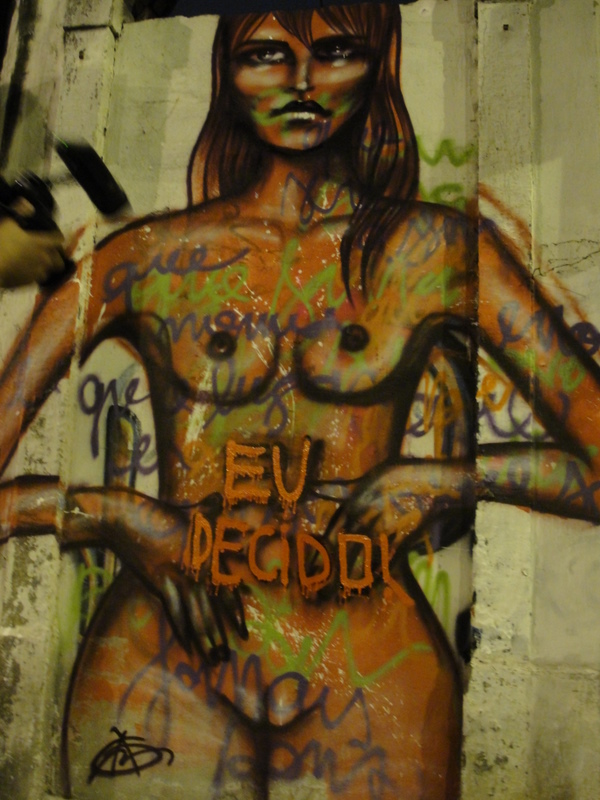
This abortion painting is about the right to have dominion over your body. Abortion is linked to the question of sexuality. People say that women will just use this as a form of contraception; I got pregnant so I’ll abort – but this is isn’t true, women are responsible. If a woman gets pregnant for some reason she should be able to decide. Because of the power of the evangelical churches in Brazil, this will take ages to change.
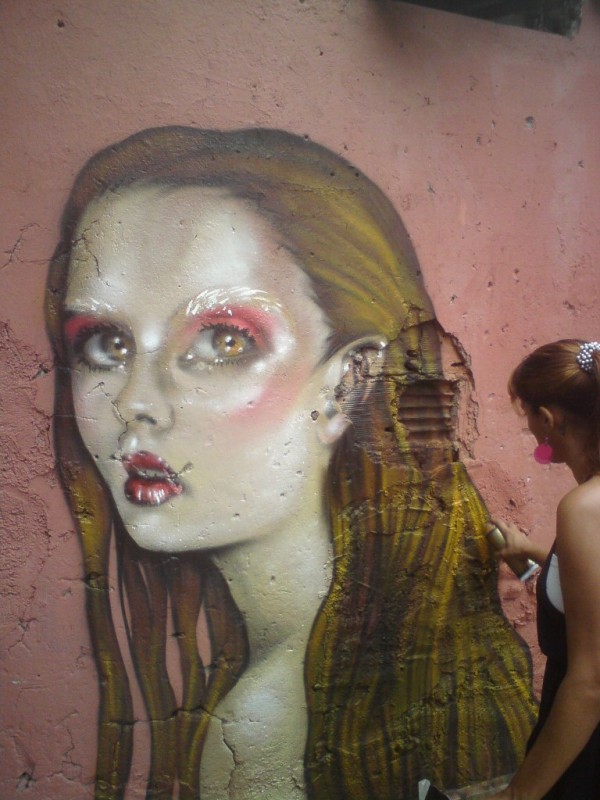
Today young girls are growing up knowing they can be what they want, including president. My generation didn’t have this, I think we thought it was possible but we just didn’t know it would be so soon. It’s not just about having a woman in the presidency, it’s about having a woman who represents our ideas, who is a feminist and wants to break taboos and win things for us. Dilma knows a lot about the economy and so on, but she’s not close to the feminist movement. They used the theme of abortion against her during the election campaign to force her into an alliance with the evangelicals.
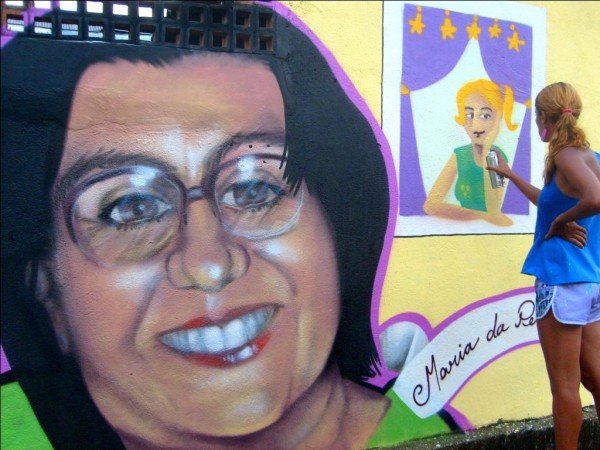
I created a graffiti project to educate women about the Lei Maria da Penha (it protects women from domestic violence) that was a great success. Because of this I won a human rights prize from a US institution called Vital Voices that was founded by Hilary Clinton when she was first lady. After this a group of us female grafitieiras created a network called Rede Nami – Feminist Urban Art Network – that uses graffiti to promote the rights of women.
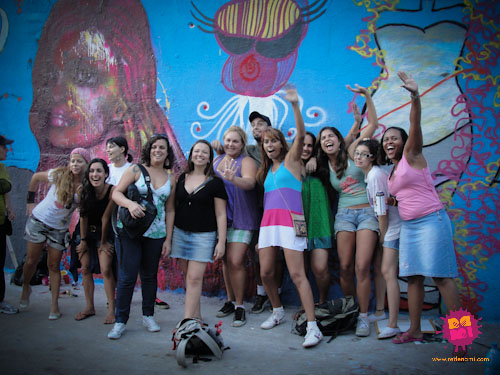
For the Vital Voices prize there was a whole formal programming, and I opened the NY stock exchange on International Day of the Woman.

Gustavo Coelho, a friend who made a film about pixacao, said I was tricking them all: You’re a 171!! (Slang from the Brazilian penal codification of fraud). How could they let a pixadora in among Hilary Clinton on Wall Street!”
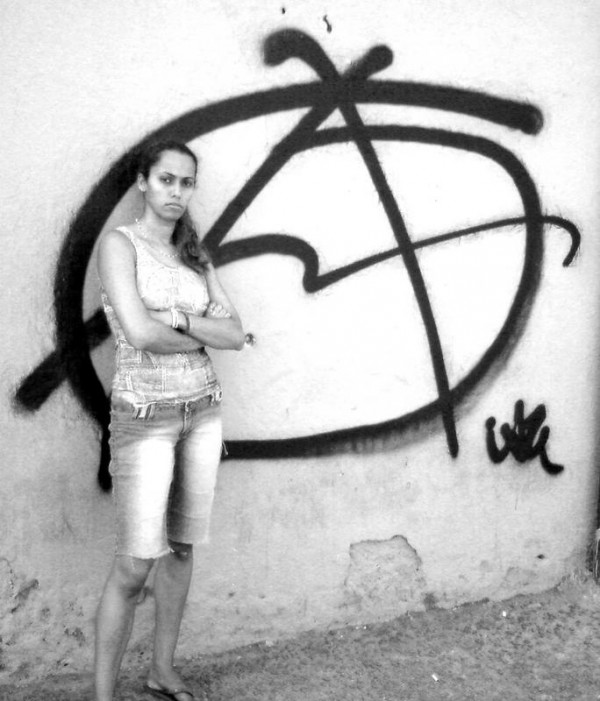
(Pics: Damian Platt/Anarkia)
Tags: graffiti, rio de janeiro, women



adorei o blog e as suas historias! nunca pare de perseguir seus sonhos!
Valeu!!!
[…] from the streets: the story of Brazilian graffiti artist Panmela Castro’s (also known as Anarkia) work to end violence against […]
Wow!
I loved reading your story and the great work you have been doing!!
[…] Anarkia is turning stereotypes upside down again. Graffiti is traditionally a man’s game: dirty, dangerous, competitive. Girl graffiti writers few and far between: accepted by the boys, provided they play by the rules. […]
[…] Anarkia Boladona hace de las paredes de las calles de Brasil un instrumento contra la violencia doméstica. Autodefinida como una “grafitera política feminista”, la artista representa una nueva corriente por los derechos de las mujeres que busca lenguajes menos académicos, más osados y populares.La entrevista transcurre en movimiento. Anarkia Boladona, nacida como Panmela Castro, está pintando un mural frente a una escuela municipal del suburbio de Río de Janeiro, junto a otras jóvenes. […]
[…] This mural is the story of Eve. There is Eve, the snake and the apple. So this Eve, she’s in this place with nothing to do, it was really super boring, a proper drag and there was even this guy there telling her what she could and couldn’t do, giving her orders. One day she gets really fed up, and says well I’m going to do what I want, I’m going to be happy now, I’m not going to obey any man. – Anarkia Boladona http://www.cultureisyourweapon.com/2011/04/anarkia-boladona/ […]
[…] and amplify their voices in a patriarchal society. Even in the graffiti world, women are viewed as outcasts who must earn respect from their male counterparts. Breaking into that world, Castro was […]
[…] Fonte: http://www.cultureisyourweapon.com/2011/04/anarkia-boladona/ […]